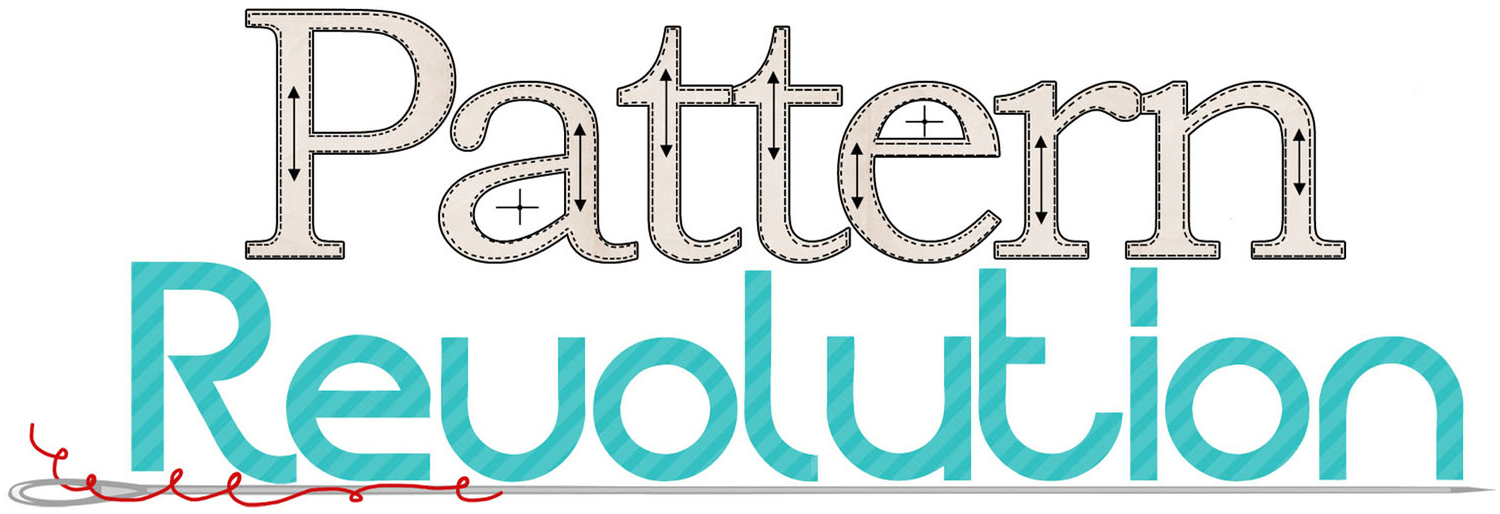Sewing Books: Sewing for Your Girls and Sew Sweet Handmade Clothes for Your Girls
/It is well known that here at Pattern Revolution, we tend to mostly talk about PDF patterns. But sometimes something so cool crosses our desks that we just can't say no.
That was the case when we were contacted by Tuttle Publishing Company to review two of their popular Japanese pattern books: Sewing for Your Girls by designer Yoshiko Tsukiori and Sew Sweet Handmade Clothes for Girls by Yuki Araki.
I went with Sewing for Your Girls - I liked the idea of simple designs that could be mix and matched and tweaked in a gazillion different ways. Within this book are 8 basic patterns, 7 of which have a second variation that are a vastly different finished product from the same base pattern. So that gives you 15 patterns. Then if you count in all the variations on sleeves, collars, pockets, lengths, and so on... the combinations are endless.
My favorite thing about the book are the clear step by step photos. Every word counts, as there aren't a ton of them, and the pictures are worth a gazillion words as they are VERY clear. A non English speaker could easily follow just the pictures and complete one of the projects in this book.
Now my least favorite thing is the fact that you need to trace the pattern pieces and add your own seam allowance. The pattern pieces are layered on top of each other and printed on the front and back of the pull out pattern pages. This means you have to carefully find and select the pattern pieces that you need for your pattern, trace them, and add seam allowance where needed before you can start sewing. For those who are used to sewing from sewing magazines or other Japanese patterns, this is probably 100% normal, but it is certainly something to be aware of before buying the book.
Now what did I make!?!??! I went with the basic pattern #1, I used the shirttail hem with no added hem length so that it would be the perfect tunic length on my girl. I love the simplicity of this look, and the little flutter sleeves are just adorable.
I loved adding the ribbon trim to the pockets and the flutter sleeves. I used contrasting bias trim for the arm holes and neck tie. There are so many ways to play with this pattern to add your own creative touches.
I would rate this pattern Beginner, and the book overall as Advanced Beginner.
The Fabric for this outfit is the Skopelos line from Art Gallery - you can grab your fabric at Whimsical Fabric. And the Shorts are the Winter Wear Designs 'Tout de Suite' Bloomer Shorts.
-------------------------------------------------------------------------------------------------------------------
That looks like an amazing book, too, Suzanne!
Jessica here, from Snickerdoodle Stew, and I reviewed the second book, by Yuki Araki, Sew Sweet Handmade Clothes for Girls. Now this is a bit of a misnomer, because there are actually patterns for WOMEN in this book, too, and they are the bigger versions of the girl's patterns. 22 projects in all!
I have to admit, I am a 21st Century-taught sewist, which means that I learned to sew from blogs, YouTube, and PDF Patterns. This is not at all a bad thing, but when it comes to paper patterns, there's definitely a learning curve in reading the pattern itself. This book comes with gorgeous modeled photos, illustrated instructions, and a fold out pattern page in the back. All of the patterns are on a two-sided page in a heavier weight paper that is sturdy and will last through many tracings. As Suzanne mentioned, you do have to trace the patterns because they overlap on top of each other, but they are in different colors, so it just takes some patience. You will also have to add your seam allowances, which is a new thing for me, too, but my 10th grade Geometry teacher would have been proud that I put my compass to work. It really was the easiest way to handle adding the seam allowances once I traced the basic pattern because I could adjust the width in Imperial or Metric measurements. This pattern has both, but recommends measuring your child in Metric for the best fit. And speaking of fit, these run a little smaller than what we're used to with PDF patterns, and you have to measure to get a good fit. Lydia is 5 and usually wears a 4 or 5 depending on the designer, but on these, she measures a 110 size, which is a 5/6 for these books.
I chose two patterns: the Camisole Dress and the short version of the Leggings in Knit Fabric. I love the clean lines of this. As much as I love ruffles, it was refreshing to be able to use different techniques to add detail, like pintucks and bias tape straps. I love the overskirt detail on the dress. If you like the styles of Callie Faye and Willow and Co., you'll love this book!
The instructions are straight-forward. Those of you that don't like conversational tutorials will appreciate this style of instruction. For the most part, the drawings are very clear and give a good order to things. There are a few sections with tips scattered throughout the book, also. Because it does rely on you to have a good amount of previous sewing knowledge, I would say this is for the intermediate sewist. The techniques contained are not hard, but if you're not familiar with the "why" of pattern set up, you will not enjoy this book as much.
I chose to showcase these patterns with Hello, Bear by Bonnie Christine for Art Gallery Fabrics that I purchased from Bee Quilted. I love the rolling hills on the main fabric and the woodgrain accents on the overskirt and binding. The teal arrow fabric is just the perfect pop of color against a subdued palette. The pretty green ribbon is also a Bonnie Christine design for Renaissance Ribbons. Hello, new addiction!
Overall, I really loved this book and following the heels of a really over-the-top project, this brought back some simplicity and freshness to my sewing. I'm looking forward to sewing more from this book and probably making more of these cute leggings!



















